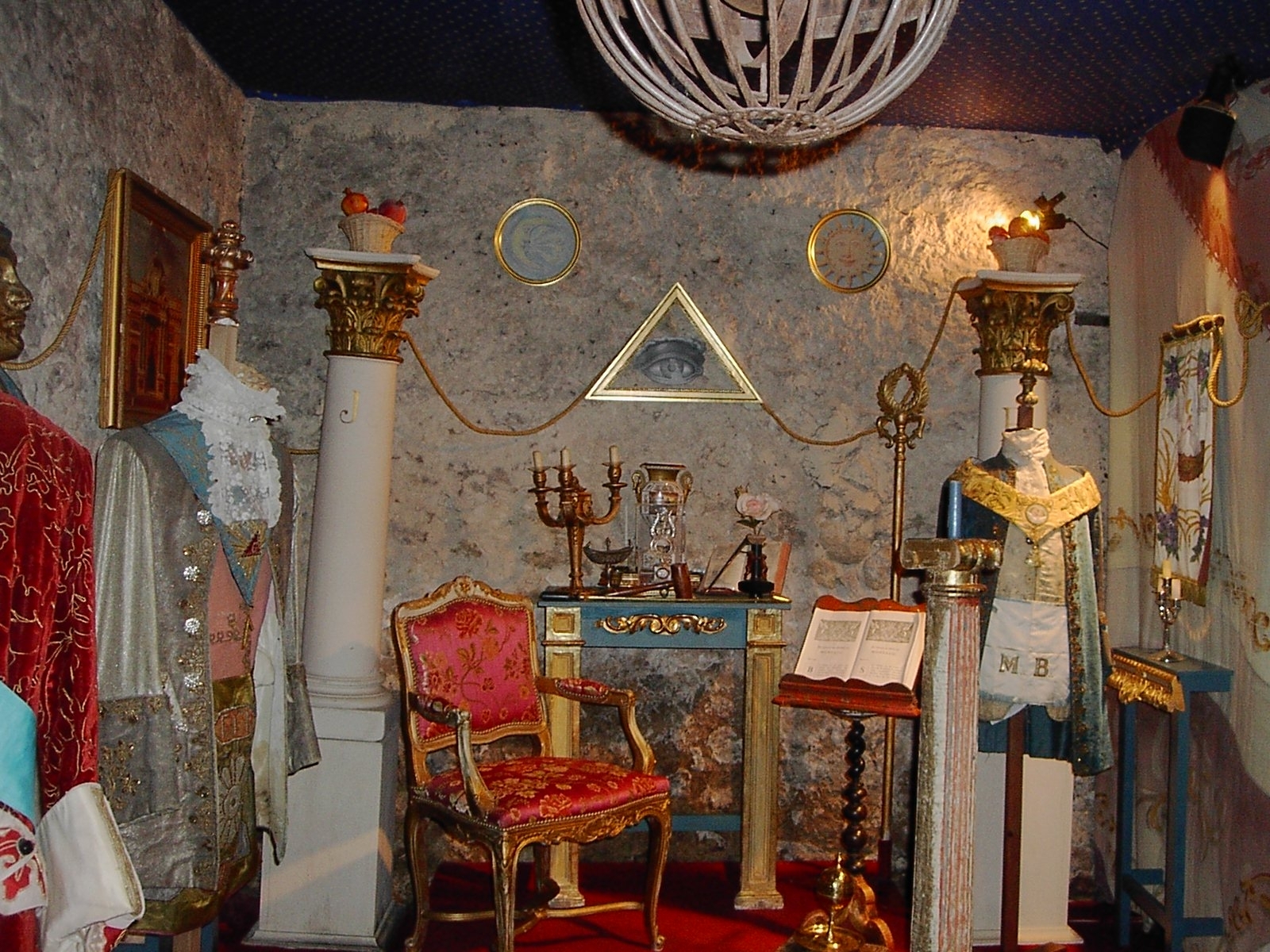Château De Mongenan on:
[Wikipedia]
[Google]
[Amazon]
 The Château de Mongenan is an 18th-century folly and
The Château de Mongenan is an 18th-century folly and
 The Château de Mongenan was built in 1736 and the botanical gardens created in 1741 by the Baron de Gasq, inspired by his friend and music teacher
The Château de Mongenan was built in 1736 and the botanical gardens created in 1741 by the Baron de Gasq, inspired by his friend and music teacher
Château de Mongenan
- official site
Gardens in Gironde Botanical gardens in France Châteaux in Gironde Historic house museums in Nouvelle-Aquitaine Masonic museums Museums in Gironde Freemasonry in France Monuments historiques of Gironde {{Gironde-geo-stub
botanical garden
A botanical garden or botanic gardenThe terms ''botanic'' and ''botanical'' and ''garden'' or ''gardens'' are used more-or-less interchangeably, although the word ''botanic'' is generally reserved for the earlier, more traditional gardens, an ...
in Portets
Portets (; oc-gsc, Portèth) is a commune in the Gironde department in Nouvelle-Aquitaine in southwestern France. Portets station has rail connections to Langon and Bordeaux.
Population
See also
* Château de Mongenan, a chateau and botanica ...
, in the Gironde
Gironde ( US usually, , ; oc, Gironda, ) is the largest department in the Nouvelle-Aquitaine region of Southwestern France. Named after the Gironde estuary, a major waterway, its prefecture is Bordeaux. In 2019, it had a population of 1,62 ...
Department of France. The gardens are classified by the Committee of Parks and Gardens of the French Ministry of Culture as among the Notable Gardens of France
The Remarkable Gardens of France is intended to be a list and description, by region, of the more than three hundred gardens classified as ''"Jardins remarquables"'' by the Ministry of Culture (France), Ministry of Culture and the Comi ...
.
The Château de Mongenan has been listed as a ''Monument historique
''Monument historique'' () is a designation given to some national heritage sites in France. It may also refer to the state procedure in France by which National Heritage protection is extended to a building, a specific part of a building, a coll ...
'' since 2003
History
Jean-Jacques Rousseau
Jean-Jacques Rousseau (, ; 28 June 1712 – 2 July 1778) was a Genevan philosopher, writer, and composer. His political philosophy influenced the progress of the Age of Enlightenment throughout Europe, as well as aspects of the French Revolu ...
and the theories of the botanist Linnaeus, who believed that all plants were valuable, whether they were ornamental, medicinal, wild, or for food. The garden was made to resemble the ideal pre-romantic garden Rousseau described in '' Julie, la nouvelle Héloïse'', full of aromas and colors. The current garden is kept as it was in the 18th century, with vegetables of the era, local varieties of fruit trees, 18th century varieties of roses, asters
''Aster'' is a genus of perennial flowering plants in the family Asteraceae. Its circumscription has been narrowed, and it now encompasses around 170 species, all but one of which are restricted to Eurasia; many species formerly in ''Aster'' are ...
, iris, dahlias, aromatic plants, and plants used to make perfume
Perfume (, ; french: parfum) is a mixture of fragrant essential oils or aroma compounds (fragrances), fixatives and solvents, usually in liquid form, used to give the human body, animals, food, objects, and living-spaces an agreeable scent. Th ...
. The park also includes tuberoses and jasmine
Jasmine ( taxonomic name: ''Jasminum''; , ) is a genus of shrubs and vines in the olive family (Oleaceae). It contains around 200 species native to tropical and warm temperate regions of Eurasia, Africa, and Oceania. Jasmines are widely cultiva ...
.
The Château also houses a museum on Freemasonry
Freemasonry or Masonry refers to fraternal organisations that trace their origins to the local guilds of stonemasons that, from the end of the 13th century, regulated the qualifications of stonemasons and their interaction with authorities ...
.
Notes
External links
Château de Mongenan
- official site
Gardens in Gironde Botanical gardens in France Châteaux in Gironde Historic house museums in Nouvelle-Aquitaine Masonic museums Museums in Gironde Freemasonry in France Monuments historiques of Gironde {{Gironde-geo-stub